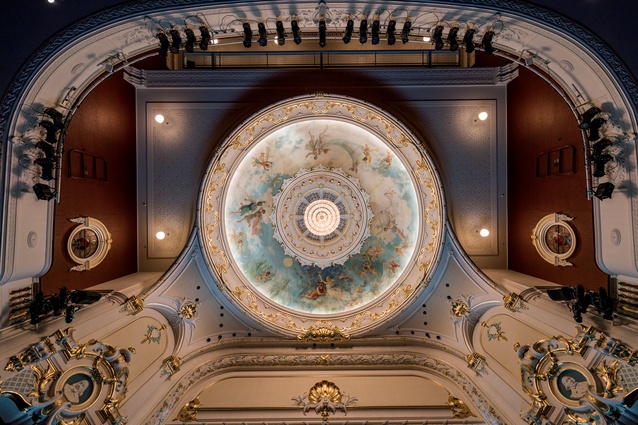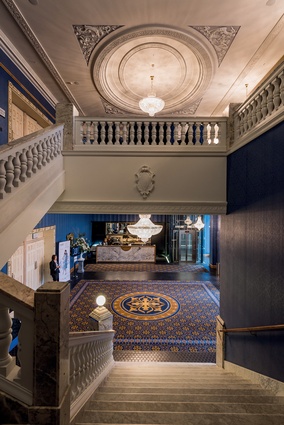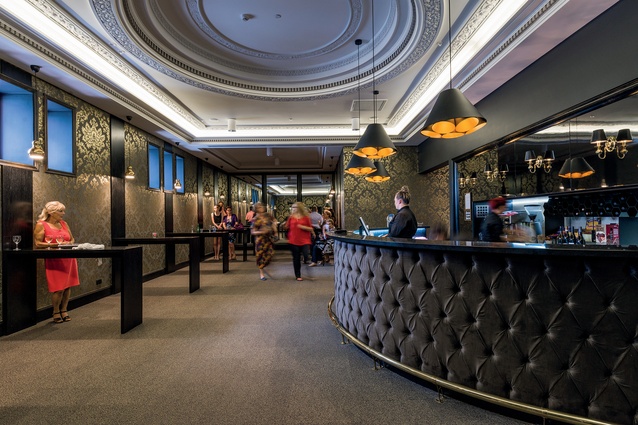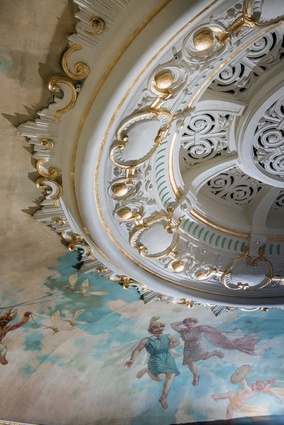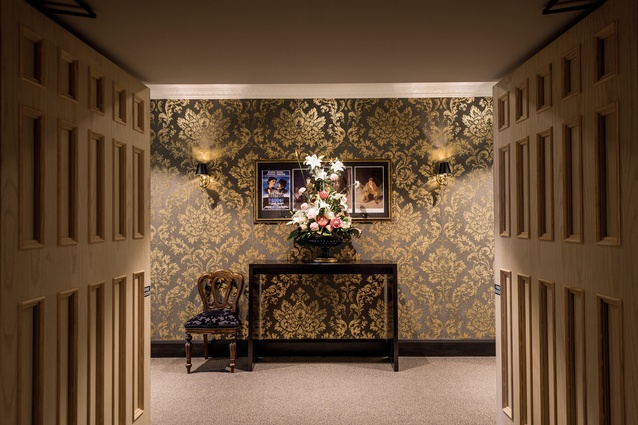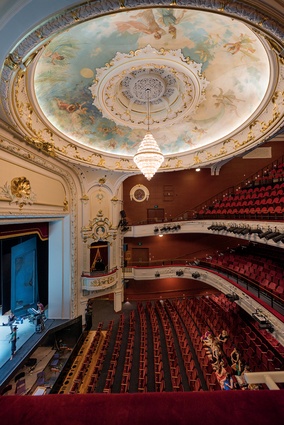Isaac Theatre Royal
Commissioned to undertake an update of the façade prior to the first Christchurch earthquake in September 2010, architectural firm Warren and Mahoney was able to assist immediately with post-‘quake assessment, protection and repair of the Isaac Theatre Royal (ITR).
“The theatre held up well after the September ‘quake, and all parties anticipated a repair project in the order of $6 million to rescue the building,” says Warren and Mahoney architect Vanessa Carswell. However, the Isaac Theatre Royal was further damaged in the February 2011 earthquake and, with every subsequent aftershock, the building’s state worsened. “After the last major ‘quake in December 2011, we [Warren and Mahoney, the ITR board and its insurers] came to the view that the safest and most cost-effective option was to deconstruct and rebuild the theatre’s brick shell in lieu of attempting to strengthen it.”
Hosting its opening show in November 2014, the ITR is the first heritage rebuild to be completed in Christchurch since the city centre’s historic edifices were, by and large, obliterated. At a cost of $40 million, the rebuild of this 1907 structure approximates the cost of a new building but retains the essential qualities of the existing heritage theatre. “It was an important decision for the board to make. We realised that we were able to save all the really important heritage elements and what was unsafe was the (brick) structure underneath,” says Carswell. “The project team was able to deconstruct the unreinforced brick theatre, rebuild a new superstructure in steel and concrete, and put it back together in a safe, modern way.”
People are able to go back to the theatre they love, Carswell adds. “A lot of feeling and memories are attached to the building. It was important for the continuation of [Christchurch’s] history to realise the social importance of restoring it to its original state.”
Concept and design took place during the first six months of 2012 but deconstruction could not wait for plans to be fully resolved. “We had to start unpicking the building immediately after the quakes, before it started to degrade,” says Carswell. “Most of the façade was preserved and protected by a wall of shipping containers, but the whole inner structure had to be progressively removed. The walls had to come down while retaining support for the two upper levels of seating, and then came the ceiling – there was a lot of consideration given to bringing down the central dome safely.”
An integral part of ITR’s roof structure, the decorative auditorium ceiling dome presented difficulty and danger for intact removal. “As soon as the dome was cut away from the trusses, there was potential for the whole roof to fall with it,” says Carswell. “So we built a cradle to take the dome, took a crane up and, within an hour, cut the dome from the timber trusses so it could carefully drop into the cradle. The dome was then wrapped in plastic while the remainder of the building was carefully unpicked.”
Built to last for “the next 150 years or so”, Carswell says, the new reinforced concrete and steel structure incorporates all of the saved heritage elements of the ITR, including many mouldings and architraves, the two leadlight stained-glass windows with poppy designs and the original marble stair “that sat alone like an island while we deconstructed everything around it”, Carswell adds.
The completed rebuild sees the original layout of the ITR retained but subtly transformed. One enters from Gloucester Street to be met with a glittering chandelier and the majestic marble stair, which winds left to the grand circle. Separate stairs lead to the upper seating gallery. “The ITR has a very typical theatre plan from the early 20th century; entrances to each level are separate. We haven’t changed that so, even today, we haven’t linked the two access stairs together.”
Some new elements have been added to the ITR during the rebuild, including a lift, an extension to the adjoining building to house ITR’s offices, additional toilets and a 100-pax events space with full commercial kitchen. These new spaces are highlighted with exposed steel, concrete and timber: to reflect the modern direction the theatre plans to take with respect to corporate entertainment.
For those who have frequented the ITR throughout their lives, the intricate designs within the ceiling dome carry the most sentiment of any interior aspect of the building. Completed by skilled Italian conservator Carolina Izzo and her team, the painted canvases on the ceiling dome have been notably restored to their original glory. The paintings feature scenes from Shakespeare’s A Midsummer Night’s Dream and have been a signature of the theatre since 1908.
Surrounding mouldings and architraves are complemented with a paint palette of duck-egg blue and gold. Noticeable in parts of each moulding are the slightly different shades of gold Izzo has used, identifying the real gold leaf that has been incorporated into her work. “Carolina was on Skype frequently conferring with her conservator network back in Italy,” Carswell adds, confirming that the final product is on par with the quality of European restorations such as that of Carracci Gallery in Palazzo Farnese, which is currently being undertaken in Rome.
The façade, however, looks somewhat different from that which theatregoers will remember. A pre-earthquake restoration in the 1980s saw it painted a brown colour but, after six layers of paint were removed during the current restoration, red bricks, thought to have been painted over sometime between 1915 and 1925, were discovered. The original bricks from 1907 are now exposed and unpainted.
A gleaming off-white frontage supports the hues of the original bricks, giving ITR the ability to light it at night and offering a canvas to project show-specific lighting effects. “Our goal is to create a proper theatre district, with people flowing out onto the streets and venturing to New Regent Street (which sits adjacent) after a performance,” says Carswell. “Christchurch has never had that kind of atmosphere and we are certainly ready for it. So we’re all really excited about the future.”

